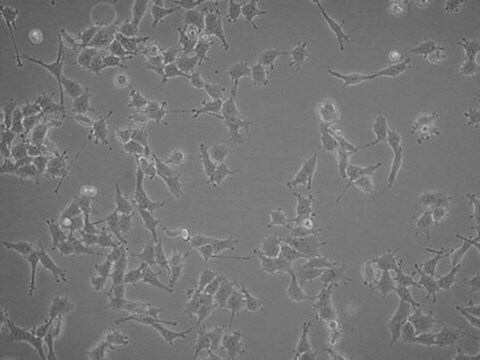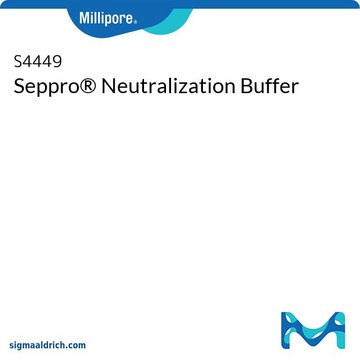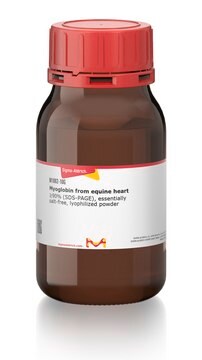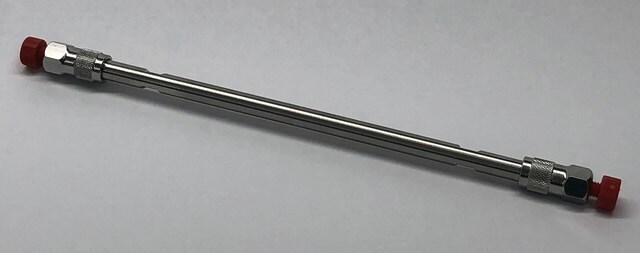SCC226
YUMM1.4 Mouse Melanoma Cell Line

Synonyme(s) :
YUMM1.4 Mouse Melanoma Cell Line, Yale University Mouse Melanoma 1.4 cell line, Yale University Mouse Melanoma cell line
About This Item
Produits recommandés
Source biologique
mouse
Niveau de qualité
Conditionnement
vial of ≥1 x 10^6 vial (viable cells per vial)
Fabricant/nom de marque
Millipore
Technique(s)
cell culture | mammalian: suitable
Conditions d'expédition
liquid nitrogen
Température de stockage
−196°C
Application
- Each vial contains > 1X106 viable cells.
- YUMM1.4 cells are tested negative for infectious diseases by a Mouse Essential CLEAR panel by Charles River Animal Diagnostic Services.
- Cells are verified to be of mouse origin and negative for inter-species contamination from rat, chinese hamster, Golden Syrian hamster, human and non-human primate (NHP) as assessed by a Contamination CLEAR panel by Charles River Animal Diagnostic Services.
- Cells are negative for mycoplasma contamination.
Caractéristiques et avantages
Description de la cible
The YUMM1.4 cell line was produced to be more experimentally relevant. The cell line was derived by backcrossing important alleles into C57BL/6J mice. The mice were interbred to produce human-relevant genetically defined mouse models that could then be used to generate cell lines. Melanomas were induced by applying 4-hydroxytamoxifen to induce Cre-lox allele recombination. Cells were then mechanically and enzymatically dissociated from the removed tumor. The melanoma lines generated from this procedure retained important human melanoma characteristics useful for studying disease progression.
The YUMM1.4 cell line is driven by Braf activation, Pten inactivation, and Cdkn2a inactivation.1 The cell line is positive for the common melanoma marker, MelanA. The cells are syngeneic with C57BL/6J mice and are very tumorigenic in vivo.
Source
Cell line was derived from a 4-hydroxytamoxifen-induced melanoma tumor in a male C57BL/6 mouse into which mutations from the Braf/Pten genetically-engineered mouse model had been introduced via backcrossing.
References
1. Meeth, K., Wang, J. X., Micevic, G., Damsky, W., & Bosenberg, M. W. (2016). The YUMM lines: a series of congenic mouse melanoma cell lines with defined genetic alterations.Pigment cell & melanoma research,29(5), 590-597.
Stockage et stabilité
Autres remarques
Clause de non-responsabilité
Code de la classe de stockage
10 - Combustible liquids
Classe de danger pour l'eau (WGK)
WGK 2
Point d'éclair (°F)
Not applicable
Point d'éclair (°C)
Not applicable
Certificats d'analyse (COA)
Recherchez un Certificats d'analyse (COA) en saisissant le numéro de lot du produit. Les numéros de lot figurent sur l'étiquette du produit après les mots "Lot" ou "Batch".
Déjà en possession de ce produit ?
Retrouvez la documentation relative aux produits que vous avez récemment achetés dans la Bibliothèque de documents.
Notre équipe de scientifiques dispose d'une expérience dans tous les secteurs de la recherche, notamment en sciences de la vie, science des matériaux, synthèse chimique, chromatographie, analyse et dans de nombreux autres domaines..
Contacter notre Service technique







